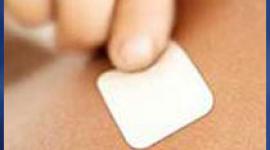Diagnosis of Alcohol Abuse and Alcoholism
Find out what's involved in getting a diagnosis of a drinking problem or alcoholism.
 An important warning sign is clearly regular, heavy drinking. The ceiling for low-risk alcohol use advocated by the U.S. government is one standard drink per day for women and two standard drinks per day for men. Because of age-related changes in the body, the National Institute on Alcohol Abuse and Alcoholism (NIAAA) recommends that men and women older than 65 years consume no more than one drink per day.
An important warning sign is clearly regular, heavy drinking. The ceiling for low-risk alcohol use advocated by the U.S. government is one standard drink per day for women and two standard drinks per day for men. Because of age-related changes in the body, the National Institute on Alcohol Abuse and Alcoholism (NIAAA) recommends that men and women older than 65 years consume no more than one drink per day.
At-risk alcohol use, or problem drinking, is defined as more than seven drinks per week or more than three drinks per occasion for women; and more than 14 drinks per week or more than four drinks per occasion for men. Heavy drinking is often defined as more than three to four drinks per day for women and more than five to six drinks per day for men.
To diagnose a drinking problem or alcoholism, your doctor will ask you:
- about your history of using alcohol and other drugs
- about any alcohol-related problems that you might have had at work, at home or with the law, including arrests or episodes of driving while intoxicated
- about any physical symptoms of alcoholism
Although these questions can be embarrassing to answer truthfully, your doctor should view alcoholism as a disease or illness that can be treated (alcoholism treatment), and will not respond to you as if you had a reason to be ashamed. And your doctor is in a better position to help you if you can be straightforward.
Your doctor will examine you, carefully checking for signs of poor nutrition and alcohol-related liver or nerve damage. The doctor will also:
- order blood tests to check for anemia, vitamin deficiencies and abnormal levels of liver chemicals.
- possibly ask you to fill out a questionnaire such as the CAGE screening test or the Michigan Alcohol Screening Test (MAST) to help in the diagnosis of alcoholism.
Sources:
- American Family Physician (Feb. 1, 2002 issue)
- 10th special report to the U.S. Congress on alcohol and health: highlights from current research from the Secretary of Health and Human Services. U.S. Dept. of Health and Human Services, Public Health Service, National Institutes of Health, National Institute on Alcohol Abuse and Alcoholism 2000:429-30; NIH publication no. 00-1583.
next:
APA Reference
Tracy, N.
(2008, December 29). Diagnosis of Alcohol Abuse and Alcoholism, HealthyPlace. Retrieved
on 2026, January 19 from https://www.healthyplace.com/addictions/articles/diagnosis-alcohol-abuse-alcoholism



